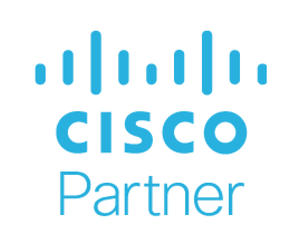HEALTHTECH: How is virtual care changing?
YODER: One of the most interesting developments over the past 12 months has been the expansion of the definition of virtual care. In the normal definition, there’s a doctor in the clinic and a patient at home. But that’s just one case. We’re seeing more provider-to-provider consults, and we’re seeing patient care administered from the hallway to reduce the exposure of clinical staff.
We’ve also expanded the digital front door concept. Nearly everything that has to happen before you walk through the door of the clinic or the hospital can be done using Cisco Webex, a video chat or even a chatbot. There’s an entire exchange that can happen with artificial intelligence and machine learning.
HEALTHTECH: How is the role of the remote contact center agent changing?
YODER: Eighty-eight percent of appointments are still scheduled by phone. Throughout the pandemic, patients have been calling health systems with questions in an unprecedented volume. Our recovery has to be an inclusive recovery: You have to blend analog and digital tools.
When call center agents can access the electronic health record (EHR) and customer relationship management and scheduling software through Cisco Webex Contact Center, you turn the phone interaction into a virtual triage. Our goal is to drive all the complexity to the background, so all agents see is the contextual information they need to tell a patient where to go to get a COVID-19 test, where to get a vaccination or how to register for a waitlist.
HEALTHTECH: How do you make distributed work environments more secure, but also more seamless?
YODER: Healthcare is one of the few industries where information needs to be simultaneously shared and secured, with significant repercussions for not doing both. Our policy is to combine zero-trust security with a borderless environment. When you log in to applications, even if you’re on a VPN, you need to use application-based multifactor authentication to access information. At the same time, everything has to be accessible from the cloud. The idea that you have a walled garden has fallen by the wayside.
One way to do this in hospitals is to automatically segment data, so medical devices aren’t running on the same network as general traffic, which is also separated from the guest wireless network. Working with Medigate, we’ve developed a deep packet inspection process. Once a medical device is plugged in and transmitting data, the Cisco Identity Services Engine can profile the device and segment the data.
When that kind of security is built in, we’re making sure that it is something we can depend on, but it’s not making things harder for the end user.
HEALTHTECH: What technology is necessary to stand up a pop-up or mobile clinic?
YODER: The need for connectivity and collaboration is foundational. Early in the pandemic, we saw this in our work helping organizations such as the University of Maryland Medical System set up field hospitals. Luckily, this expertise wasn’t needed as much as we thought, but the lessons have been impactful as we’ve started to help organizations stand up mobile vaccination sites.
Whether the clinic is in a parking lot, gymnasium or convention center, staff need access to the Tiberius software system to register patients and schedule their next appointment on the spot. You also need a way to safely connect with patients while they’re still onsite, to monitor them for adverse effects from the vaccine.
There’s also an Internet of Things element: If you bring refrigerators to a location where you don’t normally have cold storage, you need to make sure the door hasn’t been opened, and you need the right cameras and equipment to monitor the space. Cisco Meraki wireless cameras can gather and submit data to a single dashboard in real time.
This isn’t just for temporary locations — we’re also working with a retail pharmacy chain to implement this technology to track, trace and secure all operations.
RELATED: Healthcare organizations adapt networks to support IoT initiatives.
HEALTHTECH: How can organizations support clinicians’ need to collaborate in real time?
YODER: We always talk about the importance of making sure it’s HIPAA-compliant and HITRUST-certified, but also integrated with the clinicians’ workflow. The technology needs to fade to the background. We’re an Epic App Orchard partner, and we leveraged the WebRTC framework to build the Webex Telehealth Connector to make it simple for providers to schedule and join meetings or appointments directly from the Epic Hyperspace front end. There’s no additional login.
Healthcare communication is a similar use case. With Cisco Unified Communications, when nurses begin a shift, they’re assigned a phone and phone number extension that integrate with their EHR. They can perform medication reconciliation at the bedside, look at labs results, text change orders and receive alerts.
Healthcare systems are multi-architecture, and we’re allowing them to use the infrastructure they already have to enable a larger solution.
Brought to you by:











